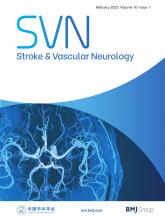Article Figures & Data
Tables
- Table 1
Item selection for short-MoCA
MoCA items Domain Full sample Discrimination Short form Orientation (country) Orientation 7.37 X Trail making Visual/executive 2.20 X Abstraction (watch) Abstraction 2.13 X Orientation (year) Orientation 2.12 X Serial subtraction* Attention 1.95 X Cube copy Visual/executive 1.69 X Orientation (place) Orientation 1.62 X Abstraction (train) Abstraction 1.58 X Animal fluency Language 1.51 X Naming (elephant) Naming 1.41 X Attention (digit 1) Attention 1.36 – Naming (lion) Naming 1.30 – Clock drawing* Visual/executive 1.30 – Naming (camel) Naming 1.22 – Delayed recall* Memory 1.18 – Digit span backwards Attention 1.16 – Orientation (day) Orientation 1.06 – Orientation (month) Orientation 1.04 – Orientation (date) Orientation 1.04 – Digit span forward Attention 0.94 – Language (John) Language 0.72 – Language (dog) Language 0.18 – Full sample includes both stroke and heart sample population (total n=428; stroke n=327; HF n=100).
*Polytomous items.
HF, heart failure; MoCA, Montreal Cognitive Assessment.
- Table 2
Discriminant indices of the MMSE, MoCA, short-MoCA, SDMT and VasCog Screen
Test AUC (95% CI) SEN SPEC PPV NPV Classification accuracy (%) MMSE <27/30 0.74 (0.69 to 0.79)† 0.69 0.79 0.79 0.68 73.5 MoCA <23/30 0.76 (0.71 to 0.81)* 0.66 0.86 0.84 0.68 75.1 short-MoCA <9/12 0.76 (0.71 to 0.80)† 0.66 0.85 0.84 0.68 74.9 SDMT‡ 0.78 (0.73 to 0.82) 0.62 0.93 0.91 0.68 76.3 VasCog Screen 0.82 (0.78 to 0.86) 0.85 0.80 0.83 0.82 82.4 *P<0.05 when AUC was compared with the VasCog Screen
†p<0.001 when AUC was compared with the VasCog Screen
‡According to local norms, impairment in SDMT is defined as <14 and <33 for subjects with primary (≤6) and secondary/tertiary (≥7) years of education, respectively.
AUC, area under the curve; CI, cognitive impairment; MMSE, Mini-Mental State Examination; MoCA, Montreal Cognitive Assessment; NPV, negative predictive value; PPV, positive predictive value; SDMT, Symbol Digit Modalities Test; SEN, sensitivity; SPEC, specificity.
- Table 3
Discriminant indices of Bocti et al’s short-MoCA, NINDS-CSN short-MoCA and this study’s short-MoCA, and when combined with SDMT
Test AUC (95% CI) SEN SPEC PPV NPV Classification accuracy (%) Bocti et al <7/10 0.71 (0.66 to 0.76)* 0.58 0.84 0.81 0.63 70.0 Bocti et al <7/10+SDMT† 0.81 (0.76 to 0.85) 0.84 0.77 0.81 0.80 80.8 NINDS-CSN <9/12 0.67 (0.62 to 0.72)* 0.48 0.87 0.81 0.59 65.7 NINDS-CSN <9/12+SDMT† 0.79 (0.75 to 0.84) 0.78 0.81 0.83 0.76 79.3 short-MoCA <9/12 0.76 (0.71 to 0.80) 0.66 0.85 0.84 0.68 74.9 VasCog Screen† 0.82 (0.78 to 0.86) 0.85 0.80 0.83 0.82 82.4 *P<0.001 when AUC was compared with the VasCog Screen.
†According to local norms, impairment in SDMT is defined as <14 and <33 for subjects with primary (≤6) and secondary/tertiary (≥7) years of education, respectively.
AUC, area under the curve; CI, cognitive impairment; MoCA, Montreal Cognitive Assessment; NINDS-CSN, National Institute of Neurological Disorders and Stroke–Canadian Stroke Network; NPV, negative predictive value; PPV, positive predictive value; SDMT, Symbol Digit Modalities Test; SEN, sensitivity; SPEC, specificity.






